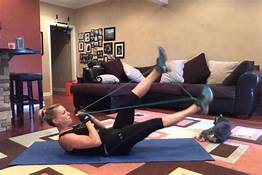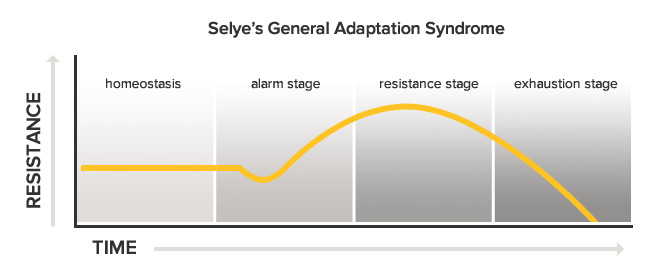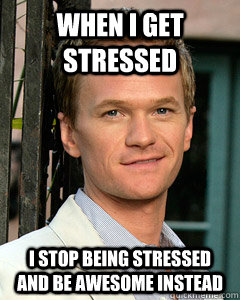
How to Begin an Exercise Program
Right now, the ‘net is being inundated with “cool” exercises that you can do at home:
That is fine and dandy, but if you want to take it to the next level and actually learn how to program these in a fashion that actually has some rhyme and reason, stay with me.
The by-the-book approach will say to ask a client their goals, and that’s where you begin. If someone has to lose weight, we start with programs that will maximize caloric expenditure. If clients want to get stronger, we use a program that emphasizes things like force development and mechanical tension. If you’re looking to get jacked/toned, we maximize things like time under tension and metabolic stress; we could on and on here with any goal.
But what if you are doing randomized workouts over and over, with no guidance on how to test if these workouts are even working in the first place?!
Saying that would be a waste of time would be an understatement.
*Consider if your financial buddy asked if your investments were “working”, and you replied “Well I’m putting money into investments, so I assume so”. That’s not an answer! You could be getting “good” at the wrong thing —losing money in this example, or actually quickening your demise with harmful exercise in your programming.

If that is you, then Seasonal Training is worth trying. This is completely a term I made up, and something I’ve interpreted 20 years of research and experience on. Its a take on Block Periodization (think: changing things up every X# weeks to focus on other attributes), but with a bias towards general health and fitness versus specific fitness goals, like running a faster 40, or deadlifting 3 times your bodyweight. I train a lot of clients, both live and online, who are not training for a sport or event, and to have them continue to progress in general health, you need to change things up once in a while in a sensible manner to prevent boredom and also see some type of return on investment.
Fitness is slightly different than health
Fitness is about physical ability, while health is about livelihood and longevity. They don’t always go hand in hand. In fact, there are tons of fit people that could do impressive things, but have resting heart rates above 70, which isn’t necessarily healthy. While fitness CAN help health, doing it with asinine programming can actually have the opposite effect. As you can imagine, it all comes down to STRESS and INFLAMMATION management. To be brief, too much stress is unhealthy! Crushing yourself 5 days a week with high intensity exercise will almost guarantee chronic inflammation, which leads to a host of health maladies.
There are Different Adaptations with Different Programs
Fitness modalities like conditioning work and aerobic development are linked to longevity in life, and overall improve things like resting heart rate and blood pressure (and tons of other things; I’m being outrageously brief here). Too much of this, though, with no focus on things like resistance training at times, and you don’t increase things like strength and power, which will hinder the ability to do even more things aerobically later on. Think of the long-distance runner who never runs faster, only farther!
 I bet this sprinter on the right has way more options in life in terms of physical ability than the distance runner on the left, who would certainly benefit from some more strength training.
I bet this sprinter on the right has way more options in life in terms of physical ability than the distance runner on the left, who would certainly benefit from some more strength training.
On the other hand, too much resistance/strength training has shown to have different consequences, both positive and negative.
Heavy lifting will make you stronger and help with things like body fat and insulin resistance, but heavy lifts can raise your blood pressure while performing them, and doing this day in and day out might raise it chronically if not programmed in a smart fashion. We all know strong guys who gas out doing cardio very quickly. The stress of strength training is at complete odds with things like aerobic development, and because of a concept that we know as “training interference”, tough to develop at the same time. But you will learn that having a well developed aerobic system will only make you stronger later when you do concentrate on strength/muscle; and that is the point of Seasonal Training.
So yeah, having a plan is important it seems….
With that said, here is a photo of Hans Selye’s General Adaptation Syndrome and Stress; this is Exercise 101, and also the main reason you don’t want to stay on the same exact program for too long—Stress. 
It has 3 stages: I’ll be brief here:
Alarm
This is the normal “fight or flight” response of your Autonomic Nervous System. Don’t worry about the weird name–all human body parts/systems have odd names for some reason. But your “ANS” is just the human organism’s system for maintaining the norm (homeostasis to be fancy), and it’s ALWAYS working.
It’s the Alarm stage where you disrupt the norm. This occurs with any stress, be it physical or mental. In terms of exercise, this is the actual workout! Upon perceiving a stressor, the body reacts with a “fight-or-flight” response, and the Sympathetic Nervous System branch of your ANS is stimulated as the body’s resources are mobilized to meet the threat or danger. The “danger” here is the heightened level of physical activity you are engaging in. You might think it’s not dangerous, but your brain is like “What the hell is going on here!” Certain hormones are released (cortisol, adrenaline, etc.), and things like your heart rate increase, among many other things.
Without this first part, fitness doesn’t improve, end of the story. But as you will see, abusing this is even worse!
Resistance
This is your repair stage, or your “rest and digest” stage. Also called the “Parasympathetic Response” of your ANS, this is where you resist and compensate as the ANS attempts to return many physiological functions to normal levels (homeostasis) while the body focuses resources against the stressor, and remains on alert.
Fitness-speak, this is the “anabolic” stage, where your body repairs itself from the stress in order to limit its inflammation next time around. If you were engaging in weight lifting, think getting bigger and stronger muscles …the only reason your muscles grow is because your brain is telling your body to get bigger and stronger so that same workout doesn’t inflame and stress you as much the next time!
That’s the purpose of this entire process of stress: Repair to limit how much a stressor actually stresses you next time. If our bodies didn’t do this, you wouldn’t be able to handle much in life, to say the least. In essence, different hormones are at play here, and your body is trying to return to its pre-alarm stage-self.
If you continue to stress yourself out, via mental, physical, etc, then the alarm-resistance stage interplay gets out of whack and never allows repair, and you will then reach the Exhaustion stage. This is where you have chronic inflammation, and everything goes to crap, including your physical and mental well-being.
Exhaustion
This is the chronically-inflamed stage that can occur if you don’t “Rest and Digest” after you “Fight or Flight”. You will see things like physical ability decrease (if you are inflamed via weight lifting, you will see your strength and/or muscle mass decrease), your mood will be altered, and in essence, your immune system is weakened, which these days is a no-no!
It is this last stage that I want to focus this blog entry on. You see, to continue to make fitness improvements, you need to continue to add more and more stress (some people will refer to this as “stimulus”) or the fitness benefits don’t come. This is as easy as adding an extra rep, or minute of aerobic work, but you quickly adapt to this and to make further fitness improvements, you require even more stress, like putting more weight on the bar, or really cranking out some high-intensity intervals. This is also why doing the same program with no progression stops working very quickly; the necessary stress that would cause Alarm and Resistance aren’t there! So that swings both ways…
To continue making improvements in fitness, be it strength or aerobic function, you will continually require more stress and recovery energy to focus on that specific goal. Where we run into trouble is the fact that we only have so much energy, and it will have to be taken from something else! For instance, if you look at a Powerlifter’s program, they have to use very advanced and stressful techniques to have their squat increase just 10lbs over the course of 6 months! And this means they can’t focus on other qualities, like aerobic development since you only have so much energy to use and you dedicate it to those heavy squat workouts!
Same goes with any competitive athlete, like long distance runners. How much strength training can they REALLY do if they are pushing the mileage further each week?
*As an aside, anything in the EXTREME in regards to fitness is rather detrimental to health. Look at any professional athlete at 50, or movement quality of someone who only engages in something like running. Variety and Balance, Daniel-son, is the key to fitness promoting good health….
 This movie had lots of truths to it…..
This movie had lots of truths to it…..
The Importance of Variability
That’s why I espouse Seasonal Training. A training company smarter than me called the Institute of Motion would call this Structured Variability. What that means is developing and focusing on certain qualities (cardio, strength, etc.) for a period of time and in succession, and then hitting “reset”, and starting over, but hopefully with a higher baseline this time! This will ensure you don’t let “bad” stress take over.

Consistently changing things after a certain amount of time to focus on developing specific qualities does a few things:
- Keeps things interesting
- Keeps you sensitive to stress. If you are 6 months in a Strength block, think about the type of stressors you likely need to keep making improvements! It would be crazy! This is where people get hurt, trying to continually push their envelopes week after week using higher and higher stressors (i.e. loads, volume, etc)
- ROI: Allows you to see progress from previous “blocks” (i.e if your legs get stronger from a Strength block, you can likely run faster when you return to your Aerobic block) Piggybacking on each other is a good term to use here.
Following?
So when beginning a program, Or “Resetting” after a long time off, give this sequence a try for 4 weeks at a time:
Aerobic Development Block
Having a good aerobic base both improves health bio-markers (resting heart rate, stroke volume) as well as improved ability to recover from harder stressors later on (strength training block, conditioning block, etc). You will be doing some basic strength training here, but not as much as in the next 2 blocks. This will be just keeping things moving, and be quite relaxing at times. This block will use a variety of intensities, namely a “high” day, followed by a “low” day. Think easy and long cardio Monday, and high intensity, but shorter duration, on Wednesday, and a mix of both on Friday, for an example. And boy can you tinker with how this is programmed, but I’ll save that for another day.
Hypertrophy/Muscular Endurance Block
You will start to focus more on resistance training while maintaining your aerobic base from Block 1. Here you will feel more Metabolic stress (think the Burn or the Pump), and as for your aerobic work, it takes a slight back seat as we are trying to just maintain your Block 1 aerobic fitness achievements. That would mean less aerobic days, but some aerobics at the end of your strength workouts. See how we change our focus here while maintaining any gains? It’s not rocket science….
Strength and Power Block
Improving your muscles’ ability to create and distribute force, and doing that FAST, will help you build a higher baseline for anything physical, including aerobic work. Getting strong is cool, but making your strength ENDURE is cooler. You want to build endurance off of any strength; think about it, you won’t build endurance in pull-ups if you can’t do 1 yet! Just like you won’t improve running speed over a mile if you don’t improve your running speed at 1/4 mile. So expect more intense resistance training here (less burn, but heavier weight), and more or less some low-intensity aerobic days, since we are funneling all your energy to those heavy lifts and the recovery they demand.
Conditioning
Conditioning is simply “How Much, and For How Long”. It’s putting it all together. This is energy systems training (see my article on Energy Systems 101) and pretty much showcases everything you have worked for up to this point. If you are a boxer, you can box harder and longer; if you are a runner, you can run faster and farther than before your training. In a general fitness approach, as you will likely be doing, we will be using the exercises you became good at in the previous blocks and doing them in a circuit and randomized fashions, which will scorch fat off your body and make for some fun workouts. Bootcamps, Crossfit, Metabolic Conditioning circuits, and the like all fall into this, however, I espouse you do not train like that all year. It’s grueling after a while, trust me!
When you complete all this, you simply Rinse and Repeat, and hopefully start with a higher baseline at that initial Aerobic Development Block. You could also combine the Hypertrophy and Strength blocks into 1 Block. How Long for each block depends on you and what you want to do, but doing something like the above for say, 8-12 weeks, and then repeating, will keep you intrigued, especially when you compare day 1 to day 90. Like i mentioned, there are dozens of ways to tinker with how you program this stuff. It really comes down to how many days you allot yourself to work out.
Wrapping It Up
Remember from the beginning of this article: Even when focusing on certain qualities (aerobic development block), you need to have principled programming within that block as well. Just going out for a run won’t cut it.
We want to “Alarm-Resist” throughout the week, ensuring we don’t “Exhaust”. This requires smart workouts and ensuring you are taking your other life stressors into account before crushing a workout. As you now know, ANY stress sets off your ANS’s stress response, and has consequences. For instance, if I was up all night stressing over a work presentation, then I probably shouldn’t double-up on my inflammation by crushing some squats that day too!
Structured variability keeps health and fitness in mind; but like vitamins, too much of 1 thing can be bad. Like Kenny Rogers would say, know when to fold ’em, and switch up your training.

Next up are a few exercise principles blogs, so you actually understand what the hell you are doing out there!
To begin training virtually with Brian, get started at https://www.trainerize.me/profile/brianmahoney/Brian.Mahoney and schedule your complimentary consultation which can be done either via call or email.



